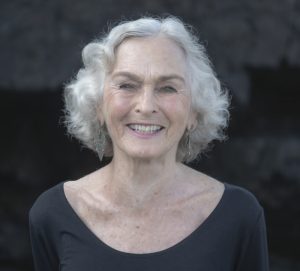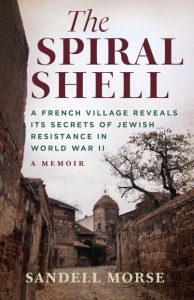How I Came to Write The Spiral Shell
 How I Came to Write The Spiral Shell, A French Village Reveals Its Secrets of Jewish Resistance in World War II
How I Came to Write The Spiral Shell, A French Village Reveals Its Secrets of Jewish Resistance in World War II
After publishing in literary magazines, after writing a novella, a three-act play, three novels, maybe more –so many revisions – and a memoir about my dad; after two agents took me on, one letting me go when she became pregnant and closed her agency, the other falling ill and closing, too; after publishing chapters of the memoir as stand-alone essays, one, “Circling My Father,” winning the Michael Steinburg essay prize and publication in Four Genre, another “This is Blood,” finding its way into the anthology, Twelve Breaths a Minuet, edited by Lee Gutkind and published by SMU Press, I decided I was an essayist. All I needed was a subject. There was me, of course, but me and what else? Personal essays needed that extra dimension, that something that pulled them up and out of navel gazing.
In 2011 at age 71, I was awarded a writing residency at Moulin à Nef, an artists’ retreat owned and operated by the Virginia Center for the Creative Arts (VCCA) in Auvillar, France. Before I applied, I researched Auvillar. The village was on the Le Puy, one of the many pilgrimage routes that led to the shrine of Saint James in Santiago del Compostela, Spain, a Christian path. I thought of Crusaders. I thought of World War II. Sitting alone in my study, I felt the ghosts of my past haunting me. An American Jewish child, I’d grown up in the shadow of the Holocaust. Postwar, I’d seen photographs in Life magazine of skeletal bodies piled like pick-up sticks. I understood France had been occupied. What did that mean?
I emailed Marilyn Kallet, author of Packing Light, New and Selected Poems. Kallet knew Auvillar’s Jewish history. She’d written about Dr. Hirsch, arrested by Gestapo, but not about his nine-year-old son, a resistance courier. Hirsch is my maiden name, and our matching names hooked me. I researched online. I read widely. Once I arrived in Auvillar, I asked around. I met Gerhard Schneider, philosopher and Catholic theologian, who like me was interested in this subject. My research took me to Paris where a friend introduced me to Germaine Poliakov, then 92. Germaine had been a caretaker in a secret house that protected Jewish refugee children. Germaine introduced me to Yvonne, who as a child, had been in her care. I like to say I fell into these stories, and I did. I felt as if I were hopping from rock to rock across a stream to a bank I could not see.
For three years, I wrote essays about the boy, his father, his mother, Germaine, and Yvonne. I blended my personal journey with history and travel. One essay became a notable in Best American Essays, 2013. Another was nominated for a Pushcart Prize and Best of the Net. In 2014, I enrolled in a six-week seminar called “Finding Your Book” at Grub Street, a literary organization in Boston. I drove an hour and half each way to learn how to collect these essays into a book. The essays had recurrent themes and recurrent characters. How difficult could that be? I just needed to find the order, right?
In class, I created summaries, an overview, a pitch to agents. According to the instructor, a literary agent who taught in a low residency MFA program, I had good stuff. But she was lost, didn’t know where she was in time. She reminded me that Vichy and this war were not second nature to my potential readers. She suggested I begin each chapter with an italicized paragraph to link them.
 Chapter? I wasn’t writing a narrative. I was writing a book of essays. Next, I hired a developmental editor to help me make sense of what I had. Her first question: “What are those little italicized paragraphs at the beginning of each chapter?”
Chapter? I wasn’t writing a narrative. I was writing a book of essays. Next, I hired a developmental editor to help me make sense of what I had. Her first question: “What are those little italicized paragraphs at the beginning of each chapter?”
There was that word again: chapter. I had a choice, try to publish this book as essays, which would most likely not sell, or turn it into a narrative which would have a chance. I chose the latter.
The Spiral Shell, A French Village Reveals Its Secrets of Jewish Resistance in World War II, my debut memoir, is out from Schaffner Press, and after years of burrowing alone in my study, I was ready to bring The Spiral Shell into the world and meet my readers. Enter Covid 19. Let me say right now, I know my book and I are inconsequential compared to what is happening to humanity. So far, I am well. If I survive, I will most likely be okay financially – eventually. Yet, ironically one of the themes of The Spiral Shell is survival in a time of crisis. In an interview, Germaine spoke to me of combing lice from the girls’ hair, giving them geography lessons, teaching singing and forming a chorus. Daily life, I learned, battled despair.
So, how did I come to write this book? I seized opportunity. I listened to intuition. I traveled solo to the village where Germaine and the children had taken refuge. I walked in her footsteps, and as I wrote, I realized I was on a double journey, discovering the wartime history of French Jews and traveling back to my faith.
—
Sandell Morse’s nonfiction has been noted in The Best American Essays series and published in Creative Nonfiction, Ploughshares, the New England Review, and Fourth Genre, among others. Her memoir, The Spiral Shell, A French Village Reveals it Secrets of Jewish Resistance in World War II is out from Schaffner Press, publication day, April 14. She lives in Maine.
website: sandellmorse.com
Facebook: https://www.facebook.com/sandell.morse
Twitter: https://twitter.com/sandellmorse
Instagram: https://www.instagram.com/sandellmorse/
Link to buy book: https://sandellmorse.com/the-spiral-shell/
Category: On Writing































This essay inspires! The topic of your book is fascinating, and I really enjoyed hearing about your writing process. My friend was a child in Vichy France, and I will make sure she knows of your work.
Stacy, thank you so much for reading and for taking the time to comment. I am so happy you found inspiration in my words.